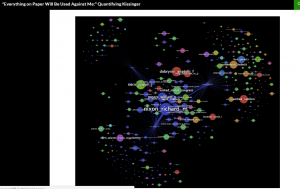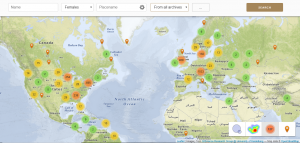We have done different type of reading on the same text and each time, there is more information being extracted. For the markup project, we conducted a very close reading and attempted to identify specific things, such as names, places, dates, events, etc. This project required more collaboration than ones before since we all had to agree on what to tag and what not to. As mentioned by Pierazzo, two readers could have two different interpretations of the same text. To solve this issue, we discussed as a group and formed rules/guidelines using Google Docs on what should and should not be tagged. There were no disputes amongst the group after this. Collaborating on this project was necessary since it helped eliminate the bias of having only one person work on the whole project.
The close reading required for this project allowed me to see more details about Samuel Tippett’s life. An important event in his life is his father’s death when he is young. This helps as readers understand Tippett even more. It also allows us to look at other people who were a part of his life, locations he travelled throughout his life and how he conveyed his emotions. We went more in depth during this project than we did during the initial transcription, as the transcription was just a private edition. This markup publication helps us get closer to the diplomatic edition that was mentioned in the reading, where we try to recreate and digitalize the initial text. It is not yet a perfect diplomatic as it is missing many of the ‘facts’ but it provides much more than the raw texts that comes with just transcribing and we have the option to change the codes of the XML file to make it look similar to the original text.

Going through the text word by word to determine the markup necessary then reading the context of that specific word, phrase or sentence helps us engage with the text. It is not just mindless reading, we actually had to engage with the text to figure out what needed to be tagged and what did not. The most difficult part of this project was deciding what to tag, such as do we mark any of pronouns that refer to God or Jesus as a person name, we decided not to. There were emotions and events that our group deemed too vague to be tagged. After marking up the texts, we compiled it as an HTML file, making it look similar to a webpage.
Bhagawat Acharya is a Computer Science major at Bucknell University. He is interested in working at a cyber security firm after graduating from Bucknell University in 2020. Currently, he is a junior fellow for the Discovery Residential college.

